Home>diy>Home Improvement>How To Project Manage A Home Renovation


Home Improvement
How To Project Manage A Home Renovation
Modified: October 21, 2024
Learn how to effectively project manage your home renovation with our expert tips and advice. Achieve your dream home with our home improvement strategies.
(Many of the links in this article redirect to a specific reviewed product. Your purchase of these products through affiliate links helps to generate commission for Storables.com, at no extra cost. Learn more)
Introduction
Welcome to the world of home renovation! Whether you have just purchased a fixer-upper or are looking to refresh your living space, embarking on a home renovation project can be both exciting and daunting. It is a chance to transform your house into the home of your dreams, but it also requires careful planning, organization, and project management.
In this comprehensive guide, we will explore the essential steps and considerations for successfully managing a home renovation project. From defining the scope and setting a timeline to budgeting, assembling a project team, and navigating the challenges along the way, we will cover all the key aspects to ensure a smooth and successful renovation journey.
Before diving into the details, it is important to note that every home renovation project is unique. The size of the project, the extent of the renovations, and the specific goals and requirements will vary from one homeowner to another. However, by following these general guidelines and adapting them to your specific situation, you will be well-prepared to tackle your home renovation with confidence.
Whether you are considering a small-scale project like updating a bathroom or kitchen, or a larger-scale renovation that involves multiple rooms, this guide will equip you with the knowledge and tools to effectively manage the process. With careful planning and execution, you can create a space that not only enhances your lifestyle but also adds value to your home.
Throughout this guide, we will highlight key considerations and best practices to help you navigate the various stages of your home renovation project. From securing permits and selecting contractors to ensuring quality control and adding those final finishing touches, we will provide you with the insights and advice you need to make your renovation a resounding success.
So let’s get started on this exciting journey of transforming your house into the home of your dreams. With the right approach and proper project management, you will soon be enjoying the beautiful and functional living space you’ve always envisioned.
Key Takeaways:
- Transform your house into the home of your dreams with careful planning, skilled project management, and attention to detail. From defining the scope to the finishing touches, navigate your renovation journey with confidence and satisfaction.
- Successfully managing a home renovation project involves assembling a competent team, obtaining permits, monitoring progress, and addressing challenges. Embrace the journey, celebrate achievements, and enjoy your newly transformed living space.
Defining the Scope
Defining the scope of your home renovation project is a crucial step in ensuring its success. This involves determining the specific goals, areas, and features that you want to include in your renovation. By clearly defining the scope, you can avoid scope creep and keep the project on track.
Start by making a list of what you want to achieve with your renovation. Consider the functionality, aesthetic appeal, and overall vision you have for your home. Are you looking to update a specific room or are you planning a whole house renovation? Do you want to focus on structural changes, interior design, or both?
Next, prioritize your goals. Identify the must-haves and nice-to-haves to help you make informed decisions as the project progresses. Keep in mind factors such as budget, time constraints, and the potential impact on your daily life during the renovation process.
It’s also important to assess the existing condition of your home. Take note of any structural issues, outdated features, or maintenance needs that may need to be addressed during the renovation. This will help ensure that your renovation not only improves the aesthetics but also enhances the functionality and safety of your home.
Consider consulting with professionals such as architects or interior designers to get their expert advice on the scope of your project. They can provide valuable insights and help you identify the possibilities and limitations of your space. Their expertise can also help you determine what aspects may require additional permits or approvals.
Additionally, it’s important to consider the future resale value of your home. While you may have specific preferences and needs for your renovation, it’s wise to consider design choices and features that will appeal to potential buyers down the line. This can help ensure that your investment in the renovation pays off in the long run.
Once you have a clear understanding of the scope of your renovation project, document it in a project scope statement. This statement should outline the specific goals, areas, and features included in the renovation, as well as any exclusions or limitations. Having a well-defined scope will serve as a reference point throughout the project and help keep everyone involved on the same page.
By taking the time to define the scope of your home renovation project, you are setting a solid foundation for a successful outcome. It will guide your decision-making and help you stay focused on your goals as you move forward with the project.
Creating a Timeline
Creating a timeline is a crucial step in managing a home renovation project. It helps you stay organized, set realistic expectations, and ensure that the project progresses smoothly and efficiently. By carefully planning and scheduling each phase of the renovation, you can keep track of deadlines, manage resources effectively, and avoid any unnecessary delays.
Start by establishing a desired completion date for your renovation project. Consider any important events or occasions that might influence this timeline, such as family gatherings or holidays. Keep in mind that unexpected challenges and changes may arise along the way, so it’s essential to build some flexibility into your schedule.
Next, break down your renovation project into different phases or milestones. This could include tasks such as demolition, electrical and plumbing work, drywall installation, flooring, painting, and finishing touches. Determine the approximate duration for each phase based on your project’s complexity and the available resources.
Once you have identified the phases, create a visual timeline using a spreadsheet, project management software, or a simple calendar. Assign start and end dates for each phase and indicate any dependencies or overlapping tasks. This will help you see how each phase relates to others and ensure a smooth flow of work.
Make sure to factor in any lead time for materials and fixtures. Planning ahead and ordering these items early will help you avoid delays and keep the project on schedule. Consult with your contractors and suppliers to determine the required lead time for each item.
It’s also important to consider the availability of contractors and subcontractors. Discuss their schedules and ensure that they can commit to the proposed timeline. Keep in mind that popular contractors may have a busy schedule, so it’s advisable to book them in advance.
Regularly update your timeline as the project progresses. This will allow you to track the actual progress against the planned schedule and make adjustments as needed. If there are any delays or changes, communicate them promptly to all involved parties and adjust the timeline accordingly.
Remember that a well-planned and realistic timeline is a key factor in the success of your home renovation project. It helps set expectations, keeps everyone accountable, and ensures that the project stays on track. By staying organized and monitoring progress, you will be better able to navigate any challenges and achieve your renovation goals in a timely manner.
Budgeting and Cost Estimation
Accurate budgeting and cost estimation are essential aspects of successfully managing a home renovation project. By carefully considering all the expenses involved and creating a realistic budget, you can avoid overspending and ensure that your project stays within your financial means.
Start by assessing your available funds and determining how much you are willing to allocate for the renovation. This will serve as the foundation for your budget. Take into account any potential financing options, such as personal loans or home equity lines of credit, if needed.
Next, create a detailed list of all the potential expenses associated with your renovation project. This can include materials and supplies, labor costs, permits and fees, professional services (such as architectural or design fees), and any unexpected contingencies. It’s important to be as thorough and comprehensive as possible to avoid any surprises later on.
Research the current market prices for materials and services to get a realistic understanding of the costs involved. This can be done through online research, visiting home improvement stores, or consulting with contractors and suppliers. Consider obtaining multiple quotes to ensure you are getting the best value for your money.
In addition to the major expenses, don’t forget to budget for incidentals and miscellaneous costs that may arise during the renovation. This can include items like cleaning supplies, temporary housing arrangements if needed, and any additional expenses related to living off-site during the renovation process.
As you prepare your budget, it’s important to take into consideration the potential for unforeseen circumstances or changes in the scope of the project. It’s advisable to set aside a contingency fund of around 10-20% of your total budget to account for these unexpected costs.
Regularly review and update your budget as the project progresses. Keep track of your actual expenses and compare them to the planned budget. This will help you identify any areas where you may be overspending or where adjustments need to be made.
Communication is key when it comes to budgeting. Make sure to discuss your budget with your contractors, subcontractors, and suppliers. Be clear about your expectations and financial boundaries. Keep an open line of communication throughout the project to address any cost-related concerns and make necessary adjustments if needed.
By carefully budgeting and estimating the costs of your home renovation project, you will have a clear financial roadmap to guide you. This will help you make informed decisions, stay within your means, and ensure that your project is completed with financial stability and peace of mind.
Assembling the Project Team
Assembling the right project team is a crucial step in successfully managing a home renovation project. The team you choose will be responsible for turning your vision into reality, so it’s important to carefully consider the individuals or companies you bring on board. Here’s a guide to help you assemble an effective project team:
1. Contractors and Subcontractors: Start by identifying the primary contractor who will oversee the entire project. Look for contractors who have experience with similar renovation projects and are licensed, insured, and have good references. If your renovation involves multiple trades, such as plumbing, electrical, or carpentry work, you may need to hire subcontractors who specialize in those areas.
2. Design Professionals: Depending on the complexity of your renovation, you may need to engage the services of design professionals such as architects, interior designers, or kitchen and bath designers. They can provide expert advice on space planning, aesthetics, and material selection, ensuring that your design vision is realized.
3. Project Manager: Consider hiring a project manager to oversee the entire renovation process. A project manager can coordinate tasks, manage timelines, communicate with all team members, and ensure that the project stays on track. Their expertise in project management can help minimize delays and keep the project running smoothly.
4. Suppliers and Material Providers: Research and source reliable suppliers and material providers for your renovation. Look for suppliers who offer high-quality materials at competitive prices. Establish a good relationship with them to ensure timely delivery and consistent product availability.
5. Specialty Tradespeople: Depending on the unique requirements of your renovation, you may need to bring in specialty tradespeople. This could include professionals such as plumbers, electricians, HVAC technicians, or flooring specialists. Ensure that they are properly licensed and experienced in their respective fields.
When assembling your project team, consider their experience, reputation, and compatibility with your project. Take the time to interview candidates, review their portfolios, and check references. It’s important to choose team members who not only have the necessary skills but also align with your communication style and understand your goals.
Effective communication is essential when working with a project team. Clearly communicate your expectations, timeline, and budget to ensure everyone is on the same page. Regularly schedule meetings and check-ins to keep everyone updated on the progress and address any concerns or challenges that may arise.
By carefully assembling a competent and cohesive project team, you are setting yourself up for a successful home renovation. The right team will bring their expertise and dedication to the project, ensuring that your vision is brought to life in the most efficient and professional manner.
Obtaining Permits and Approvals
Obtaining the necessary permits and approvals is a crucial step in the home renovation process. It ensures that your project complies with local building codes, regulations, and zoning requirements. Failing to obtain the proper permits can result in fines, delays, or even the need to undo completed work. Here’s a step-by-step guide to help you navigate the permit and approval process:
1. Research Local Requirements: Start by researching the specific permit and approval requirements in your area. Visit your local municipality’s website, reach out to their building department, or consult with professionals familiar with local regulations. Understand the specific permits needed for your type of renovation, such as electrical permits, plumbing permits, or structural permits.
2. Create a Project Plan: Develop a detailed project plan that outlines the scope of your renovation. This should include drawings, dimensions, and specifications that align with the local building codes and regulations. These documents will be necessary to obtain permits and approvals.
3. Complete Permit Applications: Fill out the required permit applications accurately and provide all necessary documentation. This may include your project plan, architectural drawings, engineering reports, and evidence of compliance with building codes. Ensure that you submit all required fees and any additional supporting documents as requested.
4. Submit Applications: Submit your completed permit applications to the appropriate local authority. This may be the building department, planning department, or zoning department, depending on your location. Be prepared to wait for the application to be processed, as it may take several weeks or even months.
5. Address Feedback and Modifications: It’s common for the local authorities to request revisions or modifications to your project plan during the permit review process. Be responsive to their feedback and make the necessary adjustments promptly. This may involve working with design professionals or consultants to address any concerns raised by the authorities.
6. Obtain Approvals: Once your permit applications have been approved, you will receive the necessary permits to proceed with your renovation. Make sure to display these permits prominently on the worksite, as inspectors may visit periodically to ensure compliance with the approved plans and permits.
7. Schedule and Coordinate Inspections: As you progress through your renovation, there will be specific milestones that require inspections. These inspections ensure that the work is being done correctly and in accordance with the approved permits and codes. Coordinate with the local authorities to schedule these inspections at the appropriate stages of your project.
8. Compliance with Building Codes and Regulations: Throughout the renovation process, it is crucial to comply with all relevant building codes and regulations. Failing to do so may result in costly rework or delays. Work closely with your contractors and subcontractors to ensure that all work is completed to code.
Remember, obtaining the necessary permits and approvals is not just a legal requirement but also ensures that your renovation is safe and complies with building standards. Investing the time and effort in this process will help you avoid potential issues and ensure a smooth and successful home renovation project.
Selecting Contractors and Suppliers
Selecting the right contractors and suppliers for your home renovation project is critical to its success. The expertise, reliability, and quality of work provided by these professionals can greatly impact the outcome of your project. Here are some essential steps to guide you in selecting contractors and suppliers:
1. Research and Gather Recommendations: Start by conducting thorough research and gathering recommendations from trusted sources. Seek referrals from family, friends, neighbors, or colleagues who have had positive experiences with contractors or suppliers. Utilize online reviews, local directories, and professional associations to find reputable options.
2. Verify Credentials and Experience: Before hiring any contractor, verify their credentials, licenses, and insurance coverage. Understanding their expertise and experience in the specific type of renovation you are undertaking is essential. Look for contractors who have a proven track record, solid references, and the necessary qualifications to handle your project.
3. Request Multiple Quotes: Obtain quotes from multiple contractors to ensure competitive pricing and to compare their proposed timelines and scope of work. While cost is important, it shouldn’t be the sole deciding factor. Consider other elements such as reputation, communication skills, and past client testimonials when evaluating quotes.
4. Interview Potential Contractors: Schedule interviews with the top contenders to get a sense of their communication style, professionalism, and compatibility with your project. Ask about their experience with similar projects, their subcontracting policies, and their approach to managing challenges or changes during the renovation process.
5. Check References: Request a list of references from each contractor and follow up with them. Ask about the quality of work, adherence to timelines, communication practices, and overall satisfaction with the contractor’s performance. Visiting completed projects, if possible, can also give you a better sense of the contractor’s craftsmanship and attention to detail.
6. Obtain Written Agreements: Once you have selected a contractor or supplier, it’s crucial to have a written agreement or contract that clearly outlines the scope of work, timeline, payment schedule, and any other relevant terms and conditions. Review the agreement carefully and seek legal advice if necessary to ensure your interests are protected.
7. Establish Communication Channels: Effective communication is key to a successful renovation project. Establish clear lines of communication with your contractors and suppliers, including regular progress updates, onsite meetings, and predetermined methods of contact. Ensure that everyone involved in the project is aware of the communication expectations.
8. Selecting Suppliers: When it comes to suppliers, evaluate their product offerings, quality, pricing, and customer service. Consider factors such as delivery times, return policies, and warranty coverage. Request samples or visit showrooms to assess the quality of their materials and ensure they align with your vision for the renovation.
Remember, the contractors and suppliers you choose will play a significant role in the outcome of your home renovation project. Take the time to thoroughly research, interview, and evaluate candidates to ensure you select professionals who align with your project goals, communication style, and budget. Investing in the right team will contribute to a smooth and successful renovation experience.
Create a detailed project plan with timelines, budget, and a list of tasks. Regularly communicate with contractors and suppliers to ensure everything stays on track.
Preparing the Worksite
Preparing the worksite is an essential step in any home renovation project. A well-prepared worksite sets the foundation for a smooth and efficient project and helps ensure the safety of workers and occupants. Here are some key considerations when preparing the worksite:
1. Clearing the Area: Before the renovation begins, remove all furniture, fixtures, and personal belongings from the area being renovated. Clearing the space allows the contractors to work freely and minimizes the risk of damage to your belongings. Store items in a safe and designated area to protect them during the renovation process.
2. Protecting Surrounding Areas: Renovation work can create dust, debris, and potential damage to adjacent areas. Protect the surrounding areas by covering floors, furniture, and other surfaces with drop cloths or protective coverings. This will prevent unnecessary mess and damage during the construction process.
3. Setting Up Temporary Facilities: Depending on the scope of the renovation, consider setting up temporary facilities such as a temporary kitchen, bathroom, or living area. This ensures that you have the necessary amenities available to continue your daily routines while certain areas of your home are being renovated.
4. Addressing Safety Concerns: Renovation sites can pose safety hazards. Ensure that proper safety measures are in place to protect both workers and occupants. This may include installing barriers, safety signage, and implementing safety protocols, such as wearing personal protective equipment (PPE) and following specific work procedures for hazardous tasks.
5. Local Regulations and Permits: Ensure that you are complying with local regulations regarding worksite preparation. Some municipalities may require permits or inspections related to safety measures, temporary facilities, or environment protection. Familiarize yourself with the specific requirements in your area and obtain the necessary permits before starting the renovation.
6. Communicating with Contractors: Clearly communicate your expectations for worksite preparation to your contractors. Discuss the details of what needs to be cleared, protected, and prepared. Address any concerns or questions they may have and establish good lines of communication to have ongoing discussions about progress and any changes that may arise.
7. Accessibility and Logistics: Consider the logistics of the renovation process, such as accessing the worksite, parking for vehicles and equipment, and the delivery of materials. Ensure that there is sufficient space for contractors to move around and that there are no obstructions that could hinder their work.
8. Are There any Hazards? Evaluate the worksite for any potential hazards that need to be addressed. This may include asbestos removal, electrical or plumbing issues, or structural concerns. Consult with professionals if needed to assess and mitigate any potential risks.
By properly preparing the worksite before your renovation begins, you are setting the stage for a successful project. Clearing the area, protecting the surroundings, addressing safety concerns, and ensuring compliance with local regulations will help keep the project on track, minimize disruption, and ensure the safety and satisfaction of everyone involved.
Managing and Coordinating Tasks
Managing tasks effectively is crucial for a successful home renovation project. Proper coordination ensures that all aspects of the project progress smoothly, stay on schedule, and align with the overall vision. Here are some key strategies for managing and coordinating tasks during your renovation:
1. Create a Detailed Project Schedule: Develop a comprehensive project schedule that outlines the tasks, their sequence, and the estimated time for completion. Consider dependencies between tasks, such as the completion of one task before another can begin. Use project management software or tools to visualize and track the schedule.
2. Assign Responsibilities: Clearly define roles and responsibilities for all team members involved in the renovation. Assign specific tasks to contractors, subcontractors, and suppliers, and communicate expectations and deadlines. Establish accountability to ensure that everyone understands their role in the project and is committed to meeting their responsibilities.
3. Regularly Communicate and Hold Meetings: Maintain open lines of communication with all parties involved in the renovation project. Schedule regular meetings to discuss progress, address any challenges, and ensure that everyone is on the same page. These meetings provide an opportunity to clarify expectations, verify completed tasks, and provide updates on the overall project status.
4. Monitor Progress and Adjust as Needed: Continuously monitor the progress of the renovation tasks against the project schedule. Identify any potential delays or bottlenecks and take proactive measures to address them. Regularly update the schedule or make adjustments to avoid setbacks and keep the project moving forward.
5. Coordinate Workflows: Coordinate the workflows of different contractors and subcontractors to minimize conflict and optimize productivity. Ensure that tasks are scheduled in a logical order to avoid unnecessary rework or disruption. Facilitate clear communication between different trades to ensure smooth transitions between tasks.
6. Address Changes Promptly: Renovations often involve changes or adjustments along the way. Be prepared for unexpected modifications and address them promptly. Establish a change management process to assess the impact of changes on the overall project, consider cost implications, and evaluate the feasibility of incorporating the requested changes.
7. Maintain Quality Control: Implement quality control measures to ensure that the work meets your expectations and complies with building codes and regulations. Conduct regular inspections, review completed tasks, and communicate any necessary corrections or adjustments to the contractors. Address any quality concerns promptly to maintain high standards throughout the project.
8. Foster Collaboration: Encourage collaboration between all team members to foster a sense of ownership and partnership. Promote open and transparent communication to facilitate problem-solving and decision-making. When everyone feels that their input is valued, it creates a positive working environment and enhances the likelihood of a successful renovation.
By effectively managing and coordinating tasks, you can ensure that your renovation project progresses smoothly and stays on track. Clear communication, regular monitoring of progress, and proactive problem-solving will help you achieve your desired outcome and ensure a successful and satisfying home renovation experience.
Monitoring Progress
Monitoring progress is a critical aspect of managing a home renovation project. By closely tracking the advancement of tasks and milestones, you can ensure that the project stays on schedule, identify potential issues early on, and make necessary adjustments. Here are key steps to effectively monitor progress during your renovation:
1. Establish Clear Benchmarks: Define specific benchmarks and milestones that indicate progress and completion of major tasks or phases of the renovation project. This could include completing electrical wiring, finishing drywall installation, or installing plumbing fixtures. Clearly communicate these benchmarks to all team members to ensure everyone is aligned with the project’s progress.
2. Regular Progress Updates: Schedule regular progress updates with contractors, subcontractors, and suppliers to receive updates on completed tasks and obtain an overall status report. This can be done through site meetings, video conferences, or email updates. Regular communication will keep you informed and provide an opportunity to address any concerns or challenges as they arise.
3. Track Timelines: Continuously monitor the project timeline against the original schedule to identify any potential delays. Keep a record of completed tasks and update the schedule accordingly. This will allow you to track the overall progress and identify potential areas that need attention. Adjust the timeline as needed to ensure that the project stays on track.
4. Inspections and Quality Control: Conduct regular inspections to ensure that work is being carried out according to the highest standards and adherence to approved plans. This includes checking for code compliance, workmanship quality, and materials used. Address any issues promptly and communicate any necessary corrections or adjustments to the contractors to maintain quality throughout the project.
5. Financial Tracking: Monitor financial aspects of the project, such as budget and expenses. Keep a record of all costs incurred, including material purchases, labor charges, and any unexpected expenses. Regularly compare the actual costs against the planned budget to identify any discrepancies or potential cost overruns. This will help you maintain control over finances and make informed decisions when necessary.
6. Document Progress: Keep comprehensive documentation of the project’s progress, including photographs, invoices, permits, and change orders. This not only serves as a historical record but also provides evidence of completed work and any changes made throughout the renovation process. Documentation is valuable for record-keeping, future reference, and potential warranty claims.
7. Addressing Challenges and Changes: Proactively address any challenges or changes that arise during the renovation. This includes unforeseen obstacles, design alterations, or material unavailability. Regularly communicate with the project team to understand potential roadblocks and explore solutions together. Be open to adjusting plans or timelines when necessary to overcome challenges and maintain progress.
8. Professional Guidance: If you encounter significant challenges or require guidance, consider consulting with a professional project manager or experienced contractor. Their expertise can help you navigate complex issues, offer insights, and provide guidance on managing progress effectively.
By diligently monitoring progress throughout your home renovation project, you have better control over its execution. Regular updates, tracking timelines, conducting inspections, and addressing challenges promptly will help ensure that the project proceeds smoothly, stays on schedule, and ultimately delivers the desired outcome.
Dealing with Challenges and Changes
Challenges and changes are an inevitable part of any home renovation project. It is essential to be prepared and equipped with strategies to effectively handle these situations. By addressing challenges promptly and managing changes effectively, you can keep your project on track and minimize potential disruptions. Here are key steps to deal with challenges and changes during your renovation:
1. Expect the Unexpected: Recognize that challenges and unexpected issues may arise during your renovation project. Understanding this from the outset will help you approach the renovation with a flexible and adaptable mindset. Anticipating potential challenges will empower you to respond proactively and avoid unnecessary stress.
2. Regular Communication: Maintain open lines of communication with your project team, including contractors, subcontractors, designers, and suppliers. Encourage them to share any concerns or foresee challenges early on. Regular check-ins and site meetings allow for discussions to address issues, brainstorm solutions, and make informed decisions.
3. Seek Professional Advice: For major challenges or complex issues, consider consulting with professionals such as project managers, architects, or experienced contractors. Their expertise can provide valuable insights, alternative solutions, and guidance in navigating difficult situations. Their experience may save time, money, and prevent mistakes.
4. Assess Impact and Prioritize: When faced with a challenge or change, assess its impact on the overall project. Determine the priority level and potential consequences. Differentiate between crucial issues that require immediate attention and minor adjustments that can be addressed later. This will help you allocate resources and focus on critical tasks.
5. Evaluate Options and Alternatives: Collaborate with your project team to explore various options and alternatives. Brainstorm creative solutions that can overcome challenges or accommodate changes without compromising the project’s integrity. Consider the feasibility, cost implications, and impact on the project timeline when evaluating potential alternatives.
6. Adjust Schedule and Budget: Assess if the challenge or change requires adjustments to your project schedule or budget. Revisit the project plan and make necessary revisions to accommodate new circumstances. Be transparent with your team about any schedule or budget changes to manage expectations and ensure everyone is aligned.
7. Document Changes: Maintain clear documentation of any changes made during the renovation process. Record discussions, decisions, and agreements in writing. This includes change orders, revised plans, or any modifications to the original scope of work. Documentation helps prevent misunderstandings and serves as a reference for future reference or potential disputes.
8. Stay Positive and Flexible: Renovation projects can be stressful, especially when encountering challenges or unexpected changes. Maintain a positive attitude and remember that issues are a normal part of the process. Embrace the opportunity to find solutions, learn, and adapt along the way. A flexible approach will help you navigate challenges more smoothly.
Handling challenges and changes effectively is crucial to the success of your renovation project. By maintaining open communication, seeking professional advice when needed, and remaining flexible in your approach, you can overcome obstacles and maintain progress towards achieving your renovation goals.
Quality Control and Inspection
Quality control and inspection are essential components of a successful home renovation project. They ensure that work is carried out to the highest standards, meets the required specifications, and aligns with your expectations. By implementing effective quality control measures, you can identify and address any deficiencies or errors, resulting in a finished product that is of superior quality. Here are key steps to ensure quality control and inspection during your renovation:
1. Define Quality Standards: Clearly establish the quality standards for your renovation project. This includes outlining the desired level of workmanship, materials to be used, and adherence to applicable building codes and regulations. Communicate these standards to all relevant parties, including contractors, subcontractors, and suppliers.
2. Conduct Regular Inspections: Regularly inspect the work being carried out at various stages of the renovation. This can include inspections of structural components, electrical and plumbing installations, finishes, and overall craftsmanship. Schedule inspections at critical milestones to verify compliance with approved plans and to identify any deviations or deficiencies.
3. Engage Professional Inspectors: Consider hiring professional inspectors to conduct independent inspections at key stages of the renovation. These inspectors can provide unbiased assessments of the quality of work and help identify any potential issues or non-compliance. Their expertise can offer an additional layer of quality control and ensure compliance with building codes and regulations.
4. Address Issues Promptly: If any quality issues or deficiencies are identified during inspections, address them promptly. Communicate with the responsible contractors or subcontractors to rectify the issues and ensure that the necessary corrections are completed in a timely manner. Prompt resolution helps prevent further complications and ensures that the project stays on track.
5. Maintain Communication: Maintain open lines of communication with your project team regarding quality control. Encourage them to bring forward any concerns or suggestions related to the quality of work. Foster a collaborative atmosphere where all team members are invested in achieving high-quality results. Regular communication allows for immediate action on any potential issues.
6. Review Material Selection: Regularly review the materials being used in your renovation project to ensure they meet the desired quality standards. Check that suppliers are delivering materials as specified and that they are suitable for the intended application. Substandard materials can have a significant impact on the overall quality of the finished project.
7. Document Issues and Changes: Maintain thorough documentation of any quality issues, deviations from plans, and modifications made during the renovation. Documenting issues, resolutions, and changes helps in tracking progress, allows for accurate record-keeping, and serves as a reference for future purposes such as warranties, maintenance, or resale.
8. Final Inspection: Conduct a comprehensive final inspection before considering the renovation project complete. Evaluate every aspect of the work to ensure it meets the established quality standards. Pay attention to finishes, functionality, attention to detail, and overall workmanship. Address any remaining deficiencies prior to finalizing the project.
By implementing robust quality control and inspection processes, you can ensure that your home renovation project meets your expectations and stands the test of time. Regular inspections, timely resolution of issues, and maintaining open communication contribute to achieving the desired level of quality and ensure a successful renovation outcome.
Finishing Touches and Final Inspection
As your home renovation project nears completion, it’s time to focus on the finishing touches that will bring your vision to life. These final details and the subsequent final inspection play a crucial role in ensuring that every aspect of the renovation meets your expectations and is finished to the highest standards. Here are key steps to consider during the finishing touches and final inspection phase:
1. Evaluate the Overall Progress: Take a moment to step back and evaluate the overall progress of your renovation project. Review the initial goals and compare them to the current state of your home. Assess whether the project has achieved the desired outcome and consider any adjustments or additional finishing touches that may be necessary.
2. Focus on Detailing: Pay meticulous attention to detail during this phase. This includes installing light fixtures, finalizing paintwork, attaching hardware, and ensuring that all elements come together seamlessly. Take the time to carefully review the craftsmanship and ensure that finishing touches align with your vision and expectations for the renovated space.
3. Install Fixtures and Accessories: Install all fixtures, fittings, and accessories that were planned for the renovation. This may include faucets, door handles, cabinet hardware, and other decorative accents. Ensure the installation is done correctly and according to manufacturer instructions.
4. Flooring and Tiling: If your renovation involves new flooring or tiling, ensure that it is properly installed and finished. Pay attention to alignment, grouting, and any necessary sealing. Review the overall appearance and functionality of the finished surfaces to ensure they meet your expectations.
5. Paint and Finishes: Thoroughly inspect painted surfaces, including walls, ceilings, and trims, to ensure they are even and flawless. Check for any imperfections or missed spots and have them corrected promptly. Review the chosen finishes, such as stains or varnishes, to ensure they provide the desired aesthetic appeal.
6. Final Cleaning: Coordinate a final thorough cleaning of the renovated area. Remove any dust, debris, or construction residue that may have accumulated during the renovation process. Pay attention to nooks, corners, and hard-to-reach areas to ensure a spotless and polished final result.
7. Final Inspection: Conduct a comprehensive final inspection of the completed renovation project. Assess every aspect of the work, including functionality, aesthetics, and adherence to the original plan. Take note of any remaining issues or areas that may require adjustment or touch-ups and communicate them to the responsible contractors or suppliers.
8. Walkthrough with Contractors: Schedule a walkthrough with your contractors to review the finished project together. Address any outstanding concerns or adjustments that need to be made. Take advantage of this opportunity to ask questions, seek clarification on maintenance procedures, and understand any warranties or guarantees associated with the completed renovations.
9. Documentations and Warranties: Ensure you have all the necessary documentation related to the renovation project, including warranties, manuals, permits, and receipts. Organize and store these documents in a safe place for future reference.
10. Celebrate Your Achievements: Finally, take the time to celebrate the completion of your home renovation project. Enjoy the new and improved space you have created. Take pride in your achievements and the effort that was put into making your vision a reality.
The finishing touches and final inspection are vital steps to ensure a successful home renovation project. By carefully reviewing and addressing any remaining issues, you can be confident that the finished result meets your expectations and creates a functional and beautiful living space.
Conclusion
Congratulations! You have successfully completed your home renovation project. From the initial planning stages to the finishing touches, you have navigated through the various steps and challenges involved in transforming your house into the home of your dreams. A well-executed renovation not only enhances your living space but also adds value to your property.
Throughout this comprehensive guide, we have covered essential aspects of managing a home renovation project. We emphasized the importance of defining the scope, creating a realistic timeline, budgeting effectively, and assembling a skilled and reliable project team. We discussed the significance of obtaining the necessary permits and approvals, selecting reputable contractors and suppliers, and adequately preparing the worksite.
We also explored strategies for managing and coordinating tasks, monitoring progress, and implementing quality control measures. We discussed how to address challenges and changes that may arise during the renovation, and the importance of conducting a thorough final inspection to ensure the highest standards are met.
Renovating a home can be an exhilarating and rewarding experience. It allows you to personalize your living space, improve functionality, and create a place that reflects your unique style and preferences. However, it can also be a complex undertaking that requires careful planning, organization, and project management.
Remember, every home renovation project is unique, and your journey may have different twists and turns. It’s essential to adapt the strategies and advice provided here to suit your specific circumstances. Seek professional guidance when needed, and maintain open communication with your project team throughout the entire process.
Ultimately, the success of your home renovation project is defined by your satisfaction with the final result. Take the time to appreciate the transformation you have achieved and enjoy your newly renovated living space to its fullest.
Thank you for joining us on this renovation journey. We hope this guide has provided you with valuable insights and helpful tips. Whether you tackled a small-scale update or a full-scale renovation, we wish you all the best in your future home improvement endeavors.
Frequently Asked Questions about How To Project Manage A Home Renovation
Was this page helpful?
At Storables.com, we guarantee accurate and reliable information. Our content, validated by Expert Board Contributors, is crafted following stringent Editorial Policies. We're committed to providing you with well-researched, expert-backed insights for all your informational needs.


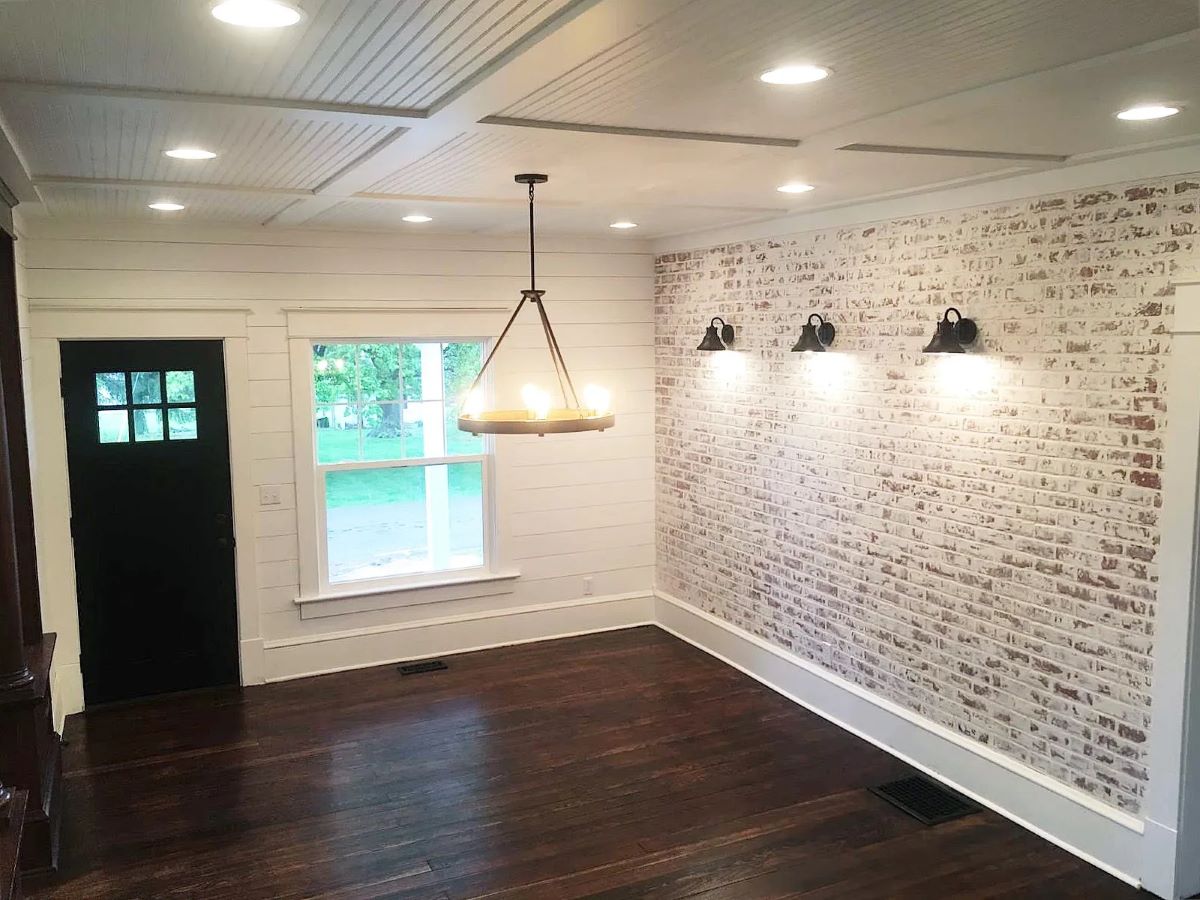

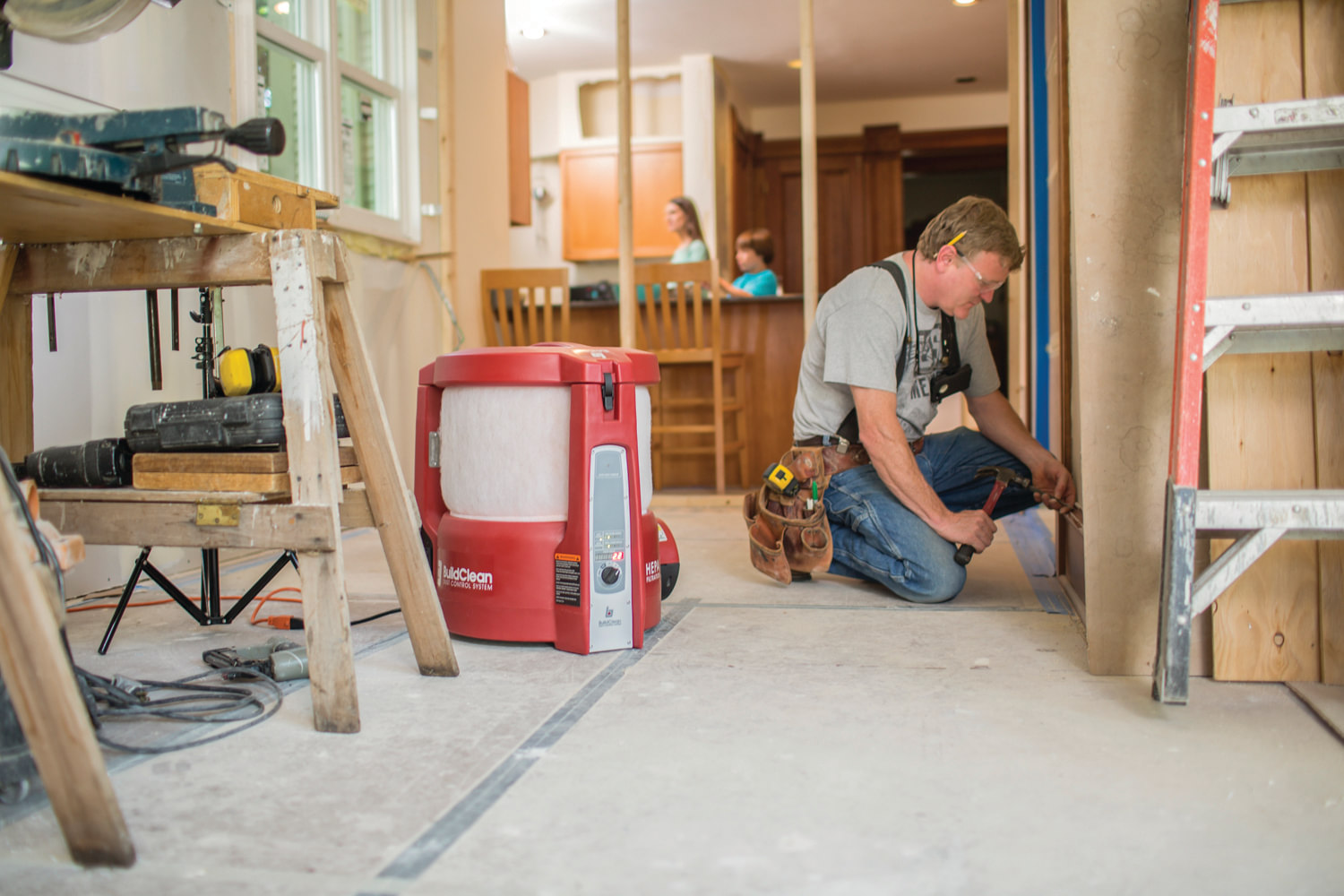
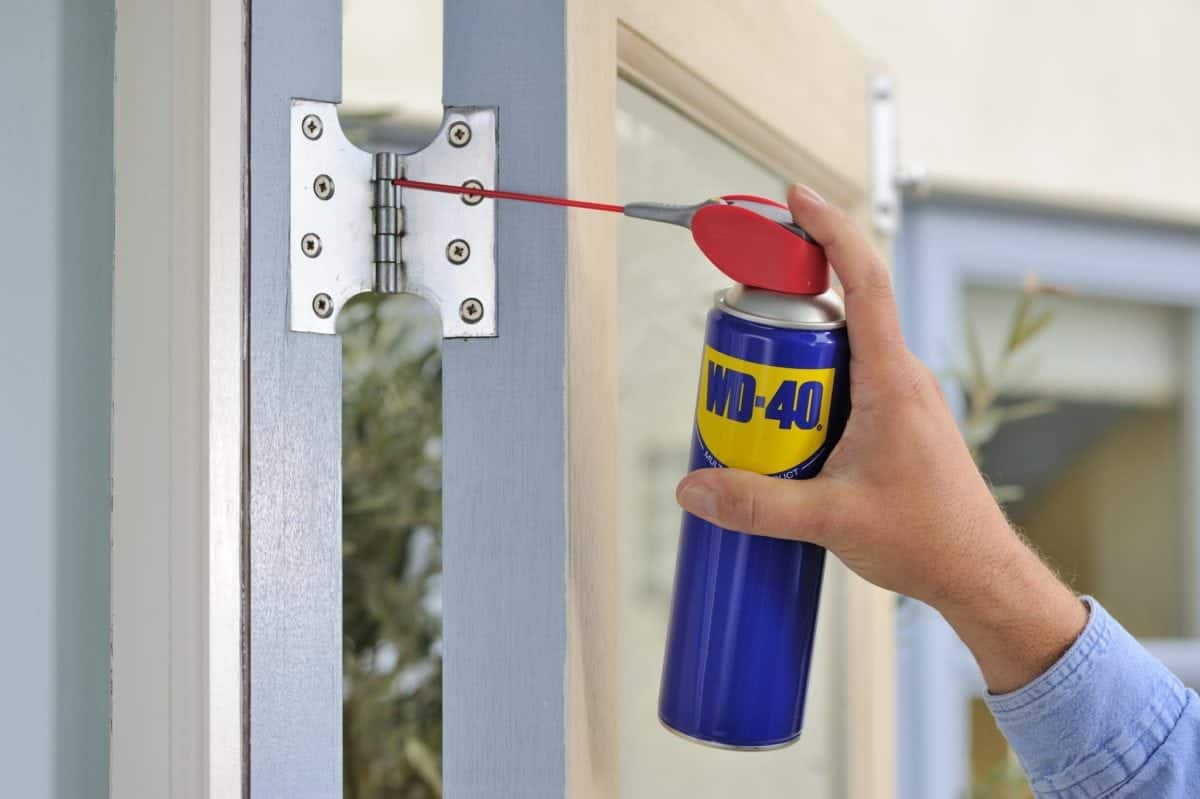

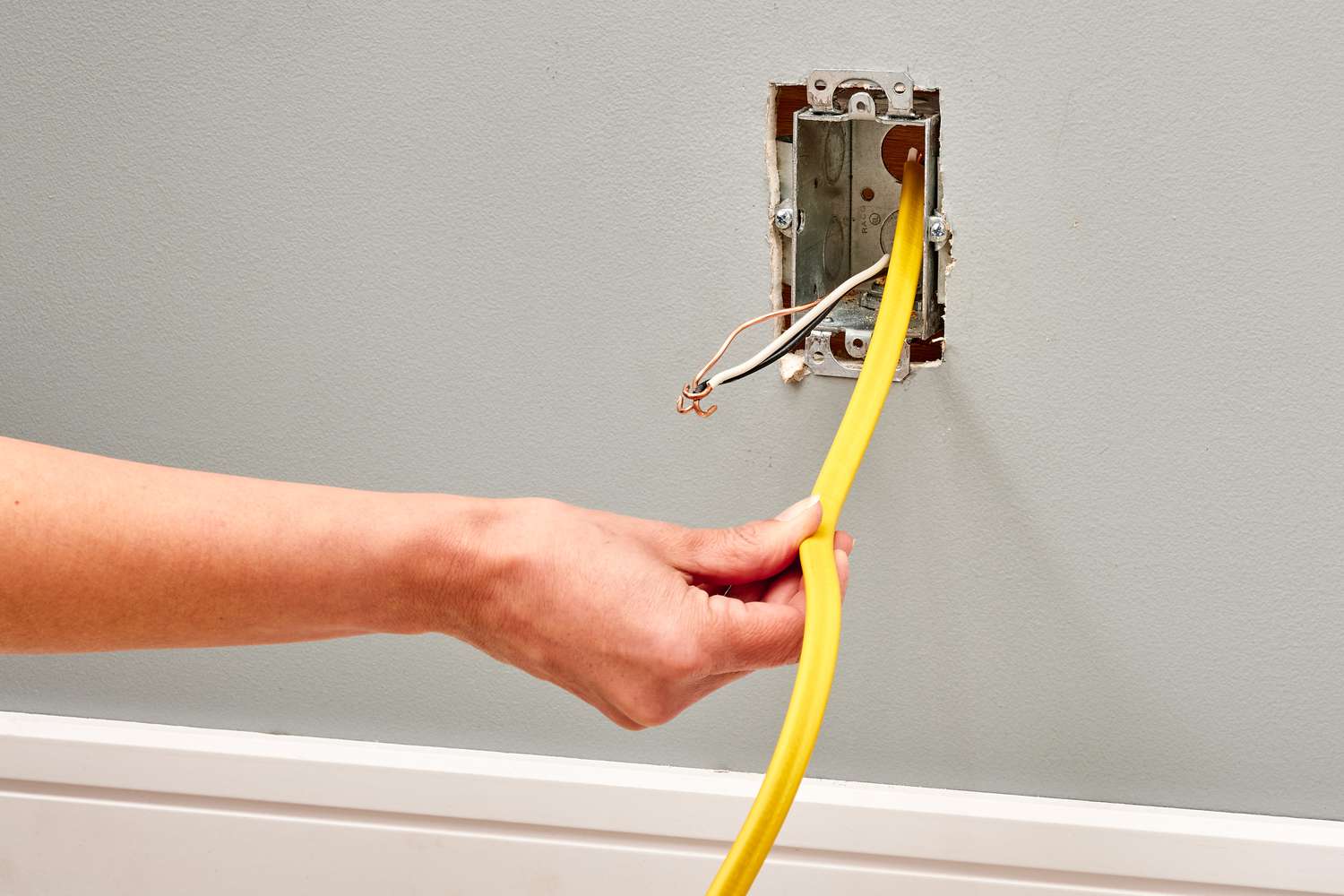



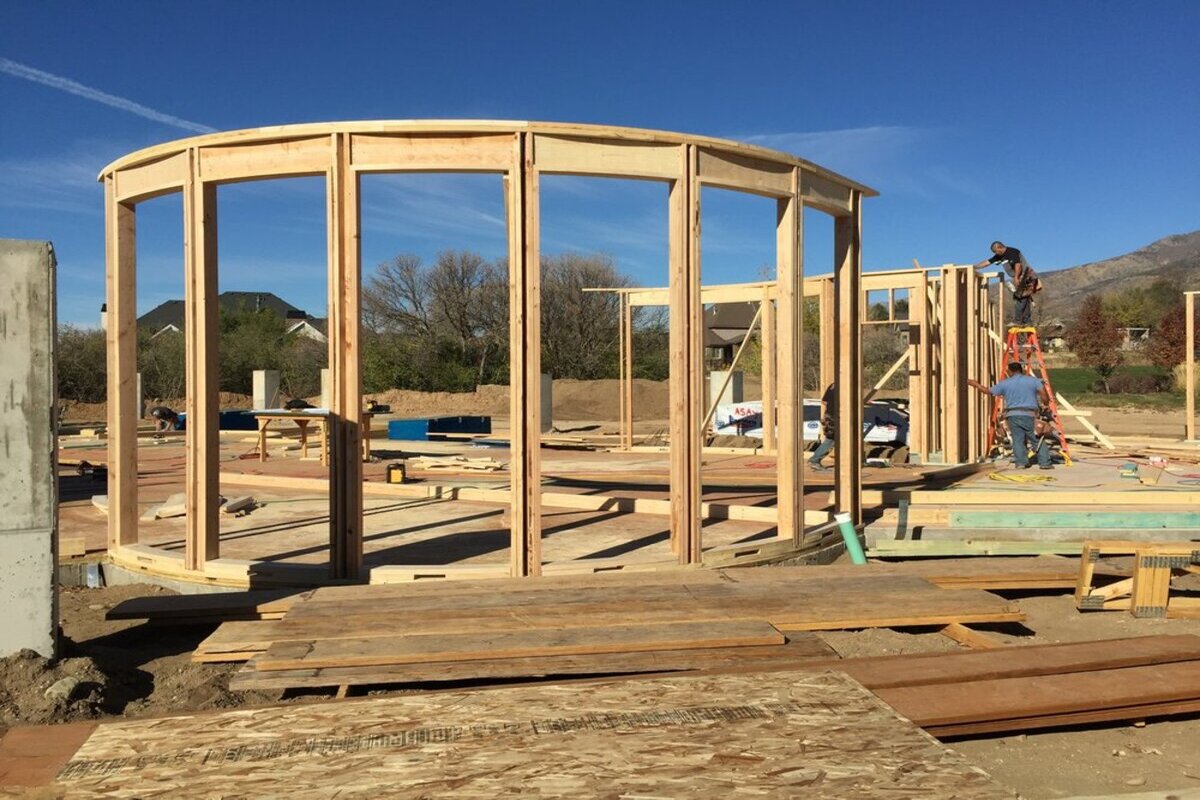

0 thoughts on “How To Project Manage A Home Renovation”